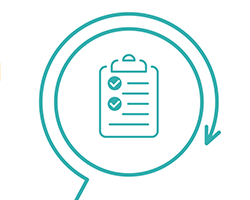Prepare
Country-level preparedness means that all sectors and systems are prepared to manage risks – at national and subnational levels, in communities, rural and urban settings, in health facilities, laboratories, emergency services and the health system overall.
Strategic risk assessment
Strategic risk assessments are undertaken before an event occurs and are used to guide risk-informed programming to catalyse action to prevent, prepare for and reduce risks associated with a specific hazard and its consequences on health.
Strategic Tool for Assessing Risks (STAR)
Strategic risk assessments are undertaken before an event occurs and are used to guide risk-informed programming to catalyse action to prevent, prepare for and reduce risks associated with a specific hazard and its consequences on health.
The Strategic Tool for Assessing Risks (STAR) tool has been developed by WHO to support Member States in risk assessment using a standardized methodology. It enables countries to conduct an evidence-based assessment of a specific risk in a comparable, reproducible and defensible manner. This tool provides:
- a systematic, transparent and evidence-based approach to identifying and classifying priority risks;
- a description of the level of national preparedness and readiness to mitigate specific hazards;
- guidance on the implementation of a comprehensive and strategic risk assessment to inform preparedness and response plans.
Develop/revise emergency operations plan
Emergency operation plans ensure the provision of rapid and coordinated action – during or immediately after an emergency – to save lives, reduce the health impact, ensure public safety and meet peoples’ basic health needs. Responses to health emergencies include a set of measures – strategic, operational and tactical – to reduce morbidity and mortality, and maintain or restore essential health services.
Develop/revise emergency operations plan
Specific contingency plans for priority hazards
Contingency plans are geared towards specific high priority threats, and outline the specific elements of response that are unique to a given hazard. They complement the emergency operations plan. Many countries already maintain contingency plans
for hazards such as pandemic influenza and other infectious diseases. Under the IHR (2005), countries are also required to develop contingency plans for points of entry. Countries require an inventory of all specific contingency plans existing
in the country and a process to cross-check of whether they cover the priority risks identified in their strategic risk assessment.
Specific contingency plans for priority hazards
Influenza/pandemic preparedness
Influenza pandemics, whether mild, moderate or severe, affect a large proportion of the world population, which puts significant strains on health and other essential services and may result in significant deaths and economic losses. The WHO Regional Office for Europe (WHO/Europe) assists countries to revise pandemic plans and is implementing the Pandemic Influenza Preparedness (PIP) framework.
Pandemic influenza: a threat that all countries need to prepare for
Planning for large public events
Health planning for large public events
Emergency risk communication





